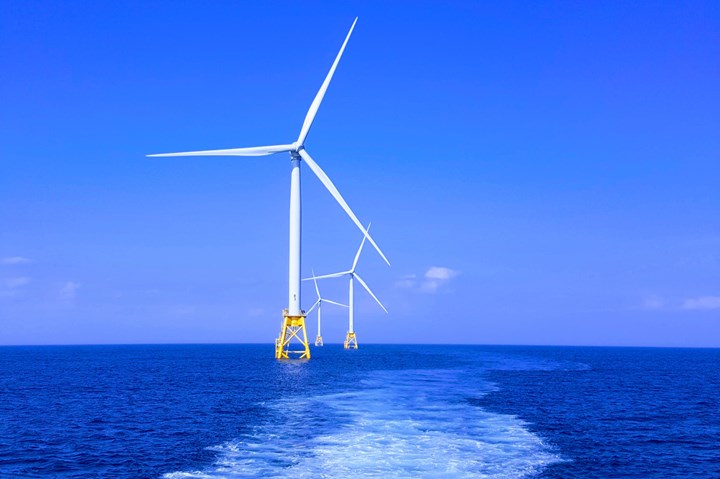U.S. DOE strategy to accelerate, expand domestic offshore wind
Newly released, department-wide strategy will tap the United States’ vast potential of offshore wind energy deployment to meet 30 GW goal by 2030.
The U.S. Department of Energy (DOE, Washington, D.C., U.S.) has announced the release of its Offshore Wind Energy Strategy, said to be a first-of-its-kind, comprehensive summary of the Department’s efforts to meet the current U.S. administration’s goal to deploy 30 gigawatts (GW) of offshore wind energy by 2030 and set the nation on a pathway to 110 GW or more by 2050. Deploying 30 GW of offshore wind would provide enough power for 10 million homes, support 77,000 jobs and spur $12 billion per year in direct private investment. The Department-wide strategy outlines how DOE will support the administration’s whole-of-government approach to accelerate the deployment of offshore wind in support of achieving a carbon-free electricity sector by 2035.
“The transformative potential of offshore wind energy is critical to achieving President Biden’s bold clean energy goals,” U.S. Secretary of Energy Jennifer M. Granholm says. “As our Offshore Wind Energy Strategy shows, we’re leveraging all resources across our department to harness this clean and reliable American energy source, which will create tens of thousands of good-paying, union jobs and revitalize coastal communities.”
Offshore wind is rapidly growing around the world, becoming a central part of international decarbonization and a vital part of coastal economies, and the domestic potential to harness offshore wind is now emerging. There are currently 40 GW of offshore wind in various stages of development, which suggests the potential for substantial expansion. The released strategy mentioned above categorizes DOE’s offshore wind efforts into four pillars:
- NOW: Lower costs from $73 per megawatt-hour (MWh) to $51 per MWh by 2030, develop a domestic supply chain and inform sustainable, just deployment of fixed-bottom offshore wind.
- FORWARD: Achieve the Floating Offshore Wind Shot goal of reducing cost by more than 70% to $45/MWh by 2035, establish U.S. leadership in floating offshore wind design and manufacturing and inform sustainable, just deployment of floating offshore wind.
- CONNECT: Enable reliable and resilient transmission solutions for large-scale offshore wind deployment.
- TRANSFORM: Expand offshore wind co-generation technologies for widespread electrification and decarbonization.
Collectively these four pillars seek to support offshore wind development in a manner that is economic, just and environmentally sustainable. For decades, DOE’s Wind Energy Technologies Office (WETO) investments in research and development (R&D) have supported the technological advances that helped commercialize wind energy production in the U.S. (read, “WETO funding opportunity addresses wind energy deployment challenges”). Additionally, the Department’s work spans technical assistance, community engagement, demonstration projects, transmission planning, loan guarantees, manufacturing research, supply chain and workforce development, environmental research and more.
The DOE Offshore Wind Strategy helps connect work happening at WETO and across 15 other DOE offices with specific roles in achieving the U.S. administration’s offshore wind goals and continuing the U.S.’ transition to a clean energy economy. Learn more about efforts by DOE’s WETO to accelerate and expand the deployment of wind energy in the U.S.
Read the DOE Offshore Wind Energy Strategy here.
Related Content
-
Polar Technology develops innovative solutions for hydrogen storage
Conformable “Hydrogen in a Box” prototype for compressed gas storage has been tested to 350 and 700 bar, liquid hydrogen storage is being evaluated.
-
Hexagon Purus opens new U.S. facility to manufacture composite hydrogen tanks
CW attends the opening of Westminster, Maryland, site and shares the company’s history, vision and leading role in H2 storage systems.
-
Infinite Composites: Type V tanks for space, hydrogen, automotive and more
After a decade of proving its linerless, weight-saving composite tanks with NASA and more than 30 aerospace companies, this CryoSphere pioneer is scaling for growth in commercial space and sustainable transportation on Earth.
















